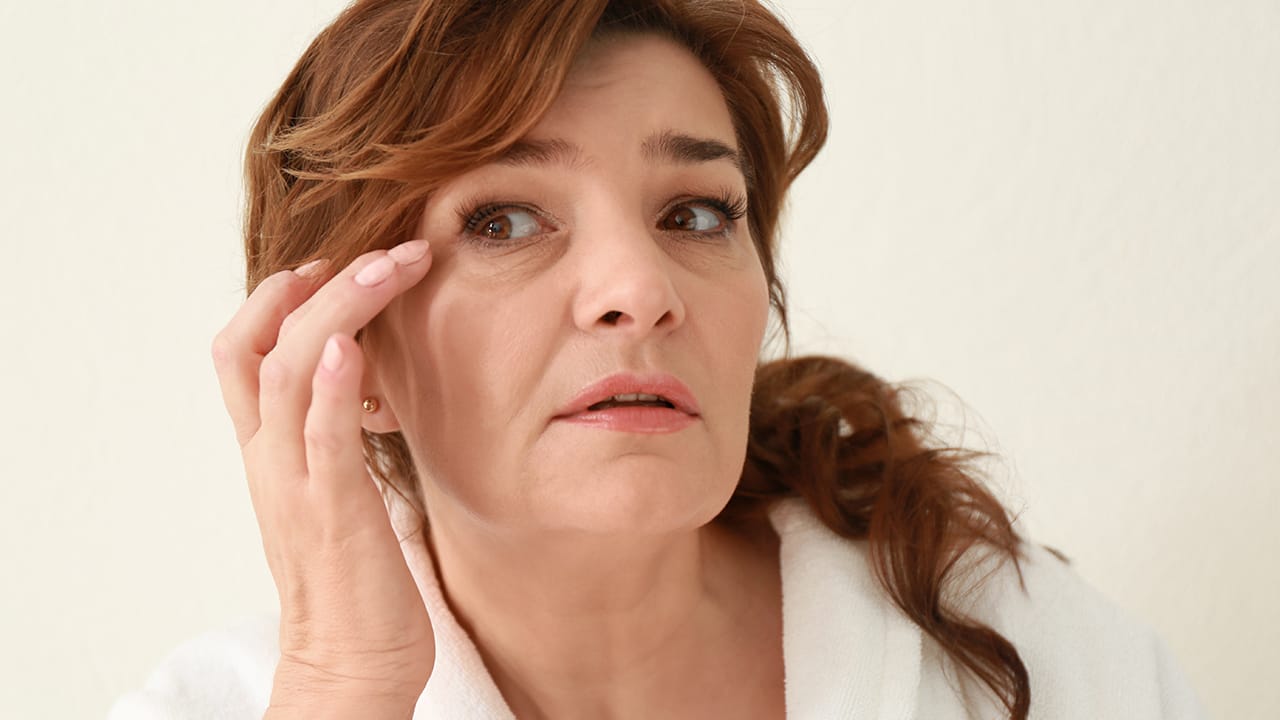Eyelid aesthetics is a surgical procedure performed to reshape the eyelids that have sagged, loosened or become baggy over time due to aging, genetic factors, the effect of gravity and environmental reasons. This aesthetic operation, known medically as blepharoplasty, can be applied to both the lower and upper eyelids. This aesthetic procedure is preferred to eliminate both functional and aesthetic concerns.
Eyelid aesthetics rejuvenate the individual’s facial expression while also eliminating excess skin that restricts the field of vision. While the upper eyelid sags due to aging, bagging and loosening occur in the lower eyelids. This situation can give the person a tired, old and exhausted appearance. The procedure is usually performed under local anesthesia and the recovery process varies from person to person. The fatty tissues, excess skin and muscle tissue around the eyes are surgically removed to provide a natural and youthful appearance.
In this article, you can find detailed answers to questions such as how eyelid aesthetics blepharoplasty is performed, who applies to it, what are its prices, and learn all you are curious about the process.
İçindekiler
ToggleWhat is Eyelid Aesthetics?
Eyelid aesthetics are aesthetic surgery procedures performed to correct deformations that occur over time in the eyelids. Blepharoplasty, as it is called in the medical literature, eliminates problems such as sagging, bagginess, wrinkles and loss of elasticity in the eyelids. Eyelid aesthetics is one of the most effective methods preferred to reduce the effects of aging that occur over time in the upper part of the face.
Drooping eyelids can be both an aesthetic and functional problem. This condition, which narrows the field of vision, can negatively affect the person’s daily quality of life. Eyelid aesthetic surgery eliminates this problem and provides a significant renewal in facial expression. It can also be combined with eyebrow lift procedures in some cases.
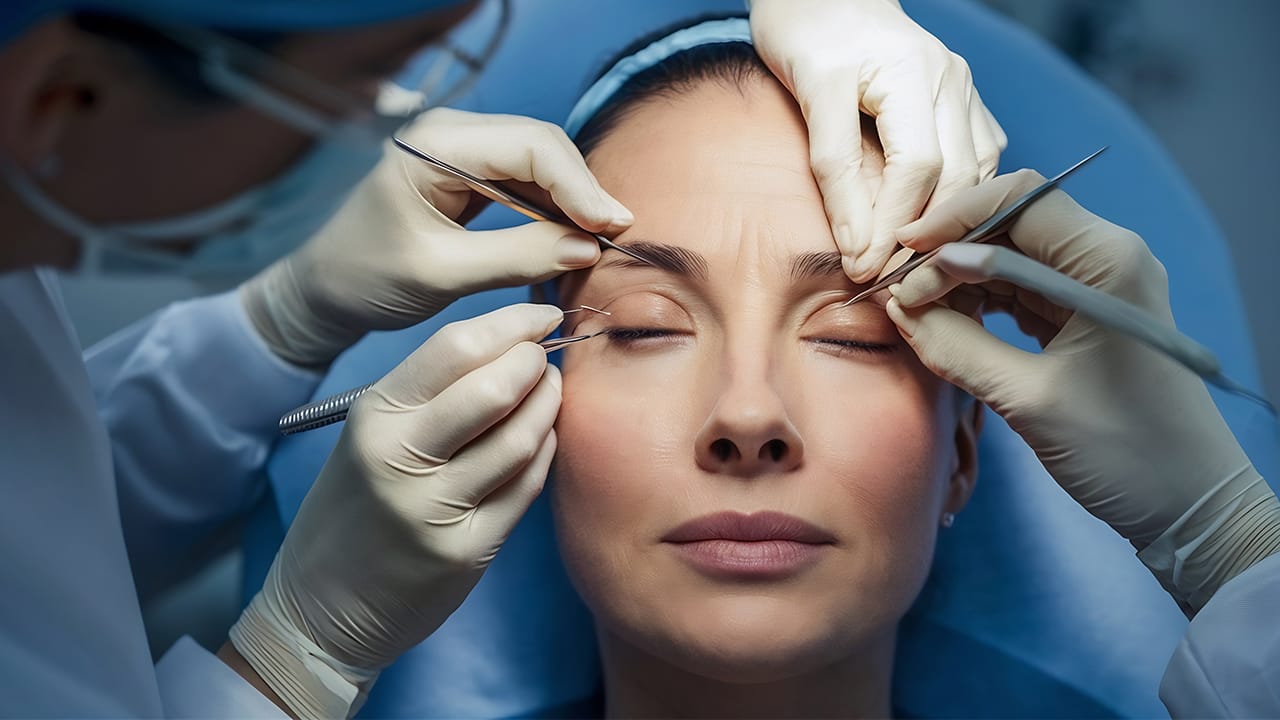
What is Droopy Eyelids?
Droopy eyelids, medically known as ptosis, are conditions in which the upper eyelid is lower than normal. This condition can be seen in one or both eyes and can cause a mild aesthetic problem, or in advanced cases, it can limit the field of vision and cause functional problems.
Ptosis can be congenital or acquired. In congenital cases, there is usually a developmental deficiency of the muscle that lifts the eyelid. Acquired ptosis can occur as a result of aging, nerve paralysis, trauma, muscle diseases, tumors or surgical interventions on the eyelid.
Symptoms of droopy eyelids may include:
Drop upper eyelids in one or both eyes
Eye strain or trying to see with raised eyebrows
Compensatory head positions such as throwing the head back
Crowning, watering or narrowing of the field of vision in the eye
Diagnosis is usually made with an eye examination, and a treatment plan is created according to the type and cause of ptosis. In mild cases, follow-up may be sufficient, while in advanced cases, surgical treatment may be necessary. Strengthening the muscle that lifts the eyelid or lifting the lid with a suspension method are common surgical options.
Drooping eyelids are important for both aesthetic and visual comfort and should not be neglected.
What are the signs of aging in the eyelid?
The eyelids are one of the areas where signs of aging are seen earliest due to the thinness of the skin structure and constant participation in facial expressions. Over time, various changes occur with gravity, decreased skin elasticity and weakening of muscle tissue. These changes around the eyes affect both the aesthetic appearance and in some cases can also limit vision functions.
Here are the signs of aging in the eyelid:
Sagging Skin:
Looseness and sagging occur in the upper eyelid. This causes the eyes to look tired, droopy and older.
Under-Eye Bags:
With the displacement of the fatty tissue in the lower eyelid, visible bags and swelling occur.
Wrinkles and Fine Lines:
The fine lines called crow’s feet on the eyelid and its surroundings deepen over time.
Dryness and Thinning of the Skin:
As the skin loses its elasticity, it takes on a drier, duller and thinner structure. This makes wrinkles on the skin more visible.
Pigmentation Changes:
Dark circles, color inequalities or sun spots may occur around the eyes.
Dropped Eyebrows:
Dropped eyebrows, together with sagging upper eyelids, can lead to an old and tired facial expression.
These signs of aging may vary depending on genetic factors, sun exposure, lifestyle and skin care habits. These signs can be greatly reduced with surgical and non-surgical methods such as eyelid aesthetics (blepharoplasty).
How is Eyelid Aesthetics Performed?
Eyelid aesthetics is usually a procedure performed under local anesthesia. However, in some cases, sedation or general anesthesia may be preferred. The duration of the procedure may vary depending on whether only the upper or lower eyelids or both will be treated.
The answer to the question of how is aesthetic blepharoplasty performed? can be given briefly as follows:
The incision for the upper eyelid is usually made along the natural fold line. Excess skin, muscle and fat tissues are removed through this incision.
In lower eyelid aesthetic procedures, the incision is made under the eyelashes or on the inside of the eyelid. Fat deposits that cause bags in this area are removed or reshaped. Regardless of how eyelid aesthetic blepharoplasty is performed, the surgeon’s experience is very important for a natural look. Patients are usually advised to apply ice after the procedure. This minimizes swelling and bruising.
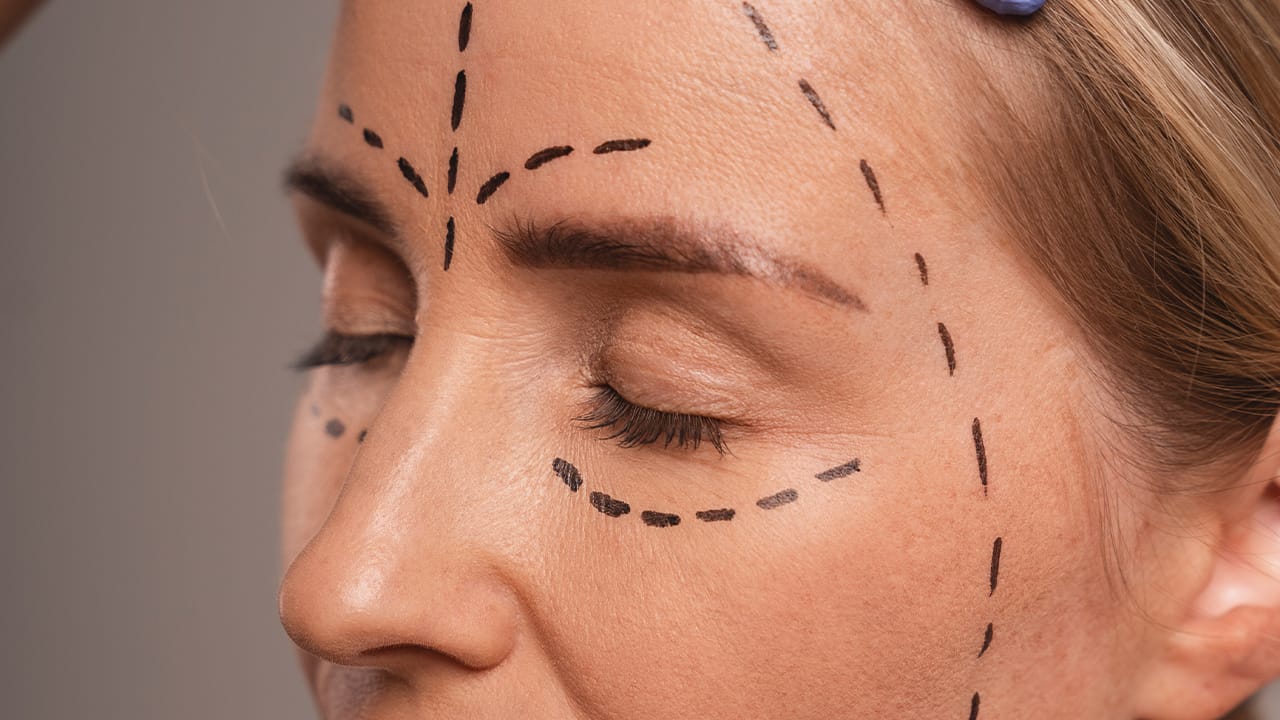
What are the Types of Eyelid Aesthetics?
Eyelid aesthetics are divided into two for the lower and upper eyelids:
Upper Eyelid Aesthetics
It is the process of removing excess skin and fat tissue on the upper eyelid. This aesthetic both eliminates the signs of aging and solves the problem of genetically existing eyelid droopiness in some individuals.
Lower Eyelid Aesthetics
Bagging and loosening occur in the lower eyelids with aging. This situation creates an aesthetically unpleasant appearance. With blepharoplasty performed on the lower eyelid, these excess tissues are removed and, if necessary, fat injection can be made under the eye.
In some individuals, both procedures are performed together. In this case, blepharoplasty is defined as combined aesthetic surgeries performed on the lower and upper eyelids. In addition, in some cases, eyebrow lift can be applied together with the aesthetic operation.
Who Can Have Eyelid Aesthetics?
Eyelid aesthetics is suitable for individuals experiencing the following conditions:
Those whose field of vision is narrowed due to droopy eyelids
Those who experience eyelid bags and swelling
Those who have a tired and old expression
Those who have genetic eyelid problems
Those who want to achieve a younger and more vigorous appearance
Individuals with good general health are suitable candidates for this procedure. Although eyelid aesthetics is more common in individuals over the age of 35, it can also be applied to younger individuals due to genetic reasons.
Eyelid Aesthetics Prices
Eyelid aesthetics prices vary depending on the scope of the procedure to be performed, the surgeon’s experience, the clinic’s equipment and the techniques used. While upper eyelid aesthetics alone or lower eyelid aesthetics alone affect the price, combining both procedures can increase the price.
The price of eyelid aesthetics may also vary by city and clinic. In some cases, if this aesthetic surgery is performed due to a functional problem (for example, severe eyelid droopiness), it may be partially covered by private insurance.
For the most accurate pricing information, it is recommended to have a one-on-one consultation with an experienced plastic surgeon.
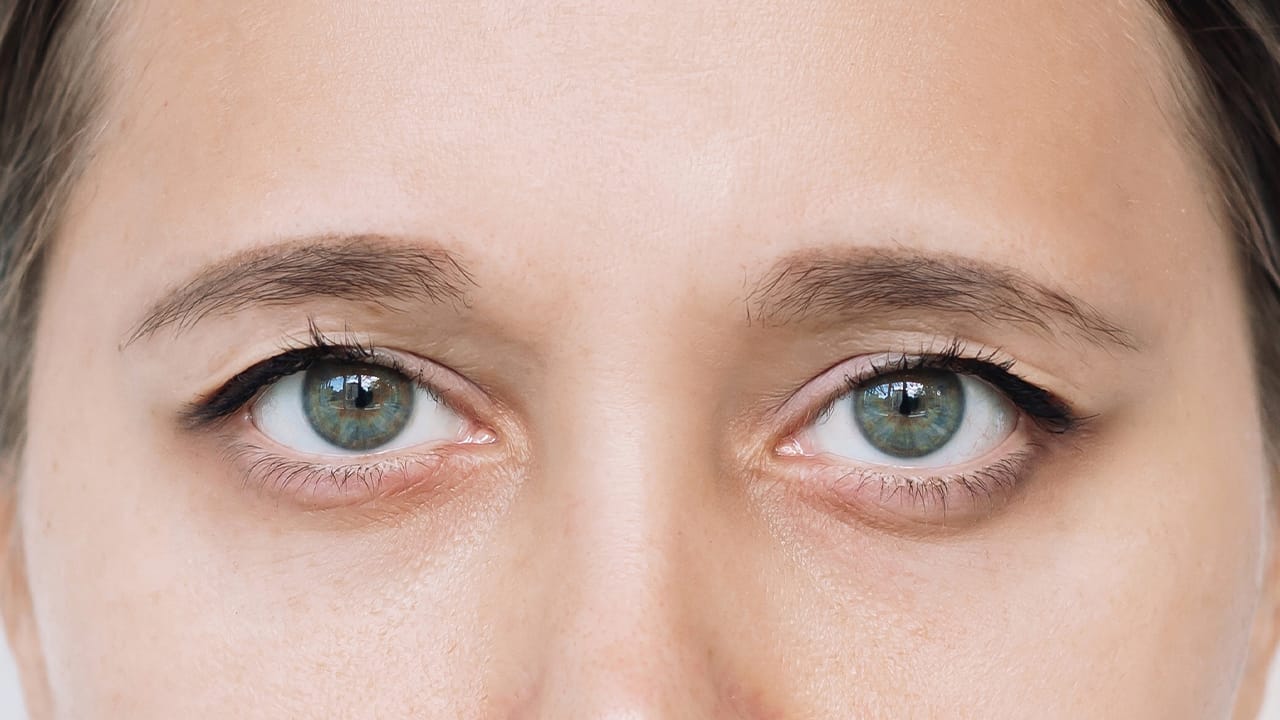
Things to Consider Before Eyelid Aesthetics
Some important preparations to be considered before eyelid aesthetics (blepharoplasty) directly affect the success of the surgery and the healing process. It is recommended to pay attention to the following points during this process:
Doctor Selection and Examination:
It is important to consult a specialist plastic surgeon or a surgeon experienced in the field of ophthalmology. In the first examination, sagging, bagging, excess skin on the eyelid and general eye health are evaluated. The patient’s expectations, the limits of the surgery and the risks should be discussed clearly.
Medical History and Used Medications:
Chronic diseases (hypertension, diabetes, thyroid diseases, etc.) and the medications used should definitely be reported to the doctor. Blood thinners (aspirin, some vitamins, herbal supplements) should generally be stopped 7-10 days before the surgery.
Smoking and Alcohol Use:
Smoking can delay healing and increase the risk of complications. Therefore, it is recommended to stop smoking for at least 2 weeks before the surgery. Alcohol consumption should also be stopped a few days in advance.
Nutrition and Sleep Pattern:
Healthy nutrition and adequate sleep are important for a strong immune system before the operation.
Planning and Support:
Work and social life should be organized considering the rest period after the operation, and close support should be obtained if necessary.
Recovery Process After Eyelid Surgery
Eyelid surgery, medically known as blepharoplasty, is a surgical procedure performed for aesthetic or functional reasons. Although the recovery process after the operation varies from person to person, it usually progresses comfortably and quickly. In the first few days, it is normal for the eyelids to have swelling, bruising, mild pain and a feeling of tension. Applying cold compresses around the eyes during this period helps reduce complaints.
Drops and ointments recommended by the doctor should be used regularly during the first week after the operation. Eye rubbing, heavy exercises and direct exposure to sunlight should be avoided. Most patients can return to their daily activities after the stitches are removed within 5-7 days after the operation.
The recovery process is usually largely completed within 2-3 weeks. During this process, bruising disappears, swelling decreases and the area around the eyes gains a more natural appearance. The final results are usually visible within 1-3 months. Although the scars are reddish at first, they fade and become invisible over time.
It is important to strictly follow the doctor’s recommendations to speed up the healing process and reduce the risk of complications. In addition, regular check-ups and attention to eye hygiene ensure a healthy and trouble-free healing process.
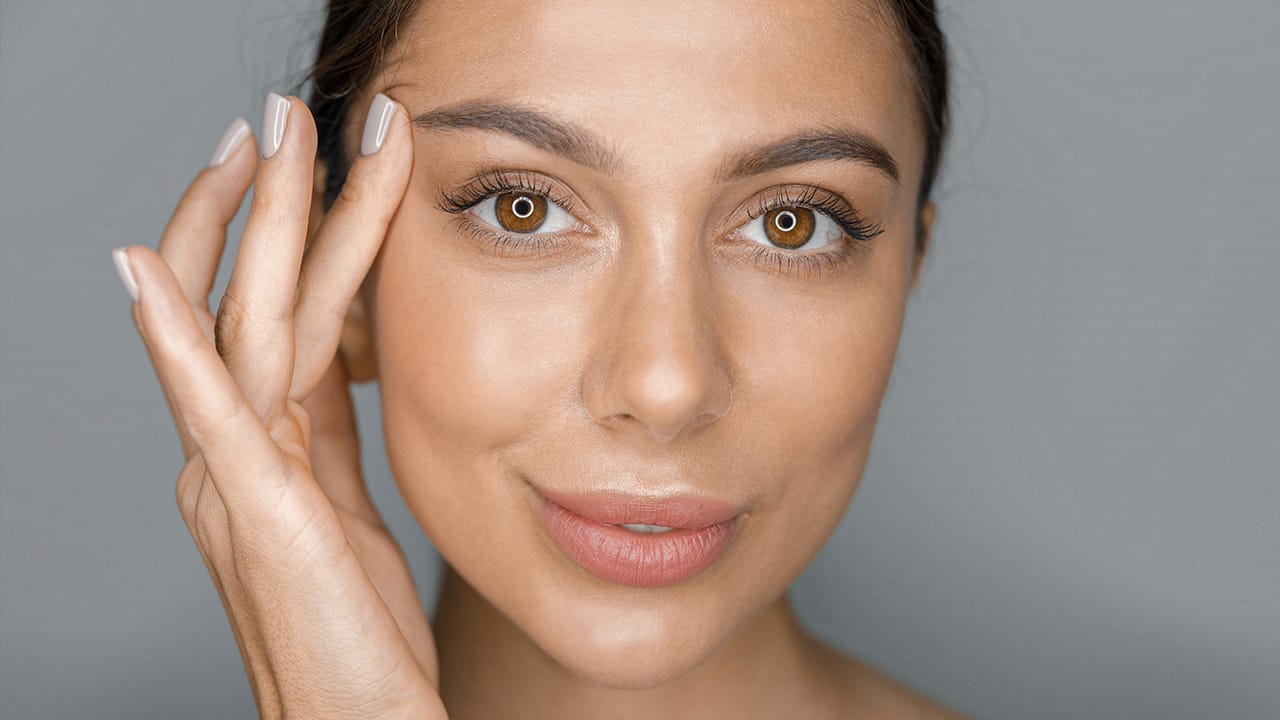
Frequently Asked Questions About Eyelid Aesthetics
Is blepharoplasty a permanent procedure?
Eyelid aesthetics blepharoplasty offers long-term results. However, since aging continues, a repeat procedure may be required in the following years.
How is eyelid aesthetics blepharoplasty performed and how long does it take?
The procedure takes an average of 1-2 hours. It is performed under local anesthesia. Patients are usually discharged on the same day.
Is eyelid aesthetics surgery painful?
No pain is felt during the procedure. There may be mild discomfort in the first few days after the surgery, but this can be controlled with simple painkillers.
Will there be a scar around the eye?
Since the incisions are made in natural lines in procedures performed with the experience of the surgeon, the scars become invisible over time.
Eyelid Surgery Risks
Although eyelid aesthetics (blepharoplasty) is generally a safe and effective procedure, as with any surgical intervention, there may be some risks and complications. These risks may vary depending on factors such as the patient’s general health, the surgeon’s experience and the healing process.
